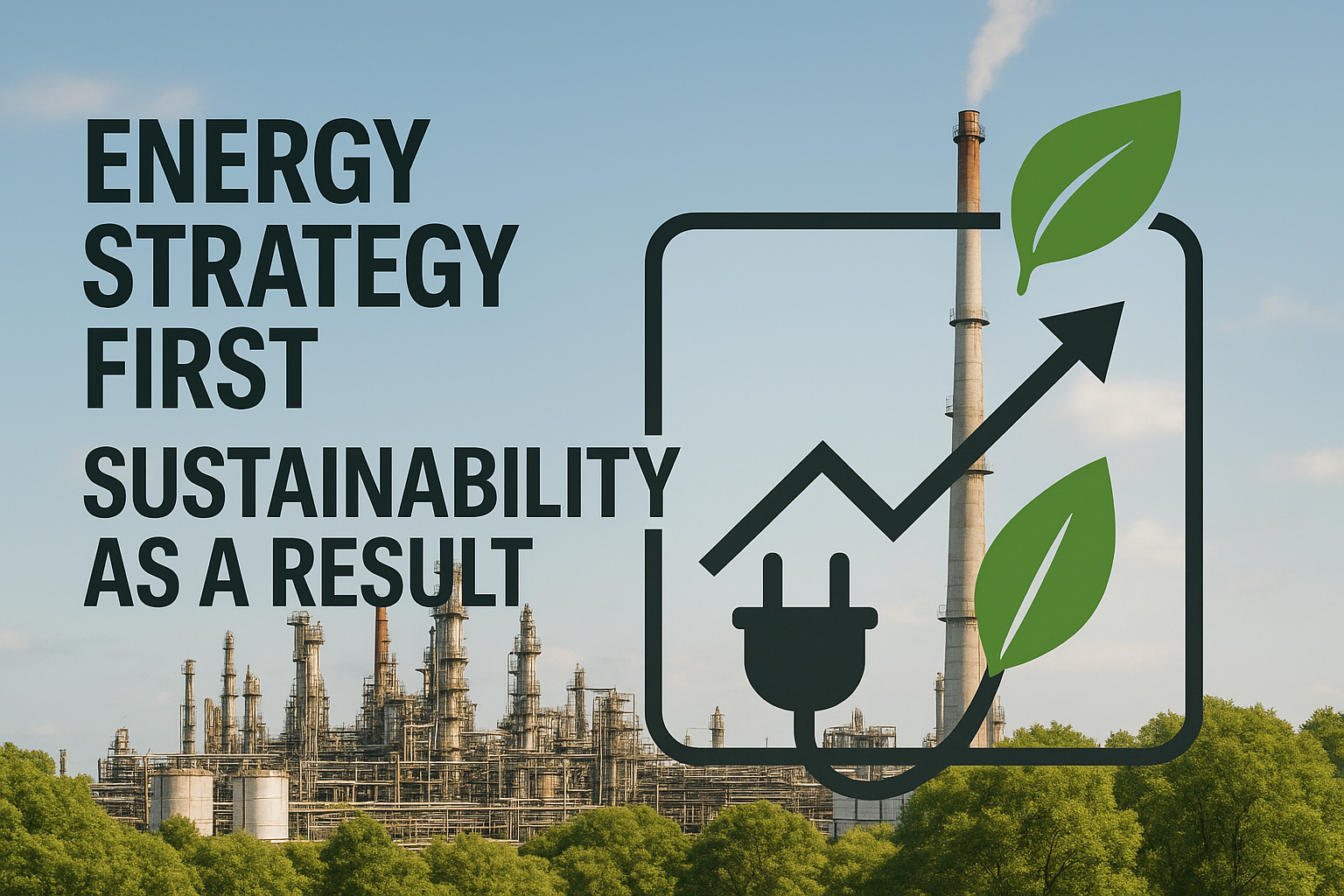Nearly 70% of process industry leaders cite data quality, contextualization, and validation as their greatest obstacles to AI implementation—not limitations in algorithms or computing power. Most chemical companies remain unprepared for AI adoption because their operational data is fragmented, inconsistent, or locked in inaccessible systems.
The evidence appears throughout front-line operations: historian tags using different naming conventions, critical lab results trapped in PDFs, and control, maintenance, and inventory systems operating in isolation. These disconnected information pools create operational blind spots, erode confidence in decision-making, and make implementing AI seem overwhelmingly complex.
Rather than chasing perfect data, there’s a more practical route. You can start with what you have, connect only the sources that matter, and improve quality as value emerges. Each section that follows breaks the journey into concrete steps so you can move from curiosity to measurable results with real plant examples and simple checklists you can adapt immediately.
Understanding What Data Readiness Actually Means
Chemical plants generate massive volumes of data spanning sensors, lab results, and maintenance logs — often scattered across disparate systems and formats such as spreadsheets, PDFs, and legacy databases. True data readiness is less about perfect integration and more about meeting a workable baseline that lets industrial AI start learning.
At a minimum, you need about twelve months of continuous historian records for the variables that drive the unit you plan to optimize to meet industrial best practices. Those records should share a common time stamp or be easily aligned. Tags should follow a naming convention clear enough for engineers and data teams to map quickly. Equally important are credentials: knowing who can grant access to each source system avoids delays once the project begins.
Operators must be prepared to run the first model in advisory mode, validating each recommendation before anyone considers closed-loop control. This validation step builds trust while revealing which data inputs actually drive meaningful improvements.
Use this quick check to gauge whether your plant meets the “good enough” threshold:
- Data access — Can you extract at least three months of time-series data for the target unit?
- Naming — Is there a basic tag dictionary in place?
- Permissions — Do you know the approvers for every relevant system?
- Validation — Are operators willing to provide feedback on AI suggestions?
If you answered “yes” to most questions, you already have a practical foundation. Successful AI initiatives routinely start with imperfect, real-world data and refine quality over time. The key is beginning with what you have rather than waiting for ideal conditions.
Identifying Which Data Actually Matters for Optimization
Start by focusing on one economic driver that directly impacts your bottom line—polymer reactor yield, utility costs, or energy efficiency. Bring together a cross-functional team including process engineers, operators, and data specialists to identify every variable that defines optimal operation. Once you’ve mapped these variables, rank each one by its direct impact on margins.
These high-impact tags typically fall into four categories. Process sensor data—temperature, pressure, and flow rates—provides the minute-by-minute operational pulse. Production records tie sensor signals to business outcomes through batch timings, yield metrics, and throughput data. Maintenance logs reveal equipment health patterns that can mask or amplify process shifts. Energy consumption data exposes hidden efficiency losses, which becomes critical since energy costs can represent a significant portion of variable costs in chemical operations.
Resist the temptation to collect every available data point. More information doesn’t automatically translate to better optimization results. In successful deployments, seemingly minor variables—like feedstock pre-heat temperature—often emerge as critical factors for yield optimization once AI models reveal their connection to downstream performance. Starting with a focused, high-impact dataset accelerates model development, concentrates quality improvement efforts where they matter most, and helps uncover these unexpected relationships faster.
Breaking Down Data Silos Without Major IT Projects
Plant data often sits in isolated pockets across process control archives, laboratory databases, enterprise planning systems, and maintenance logs. This fragmentation creates an incomplete operational view and hinders AI optimization efforts.
Key silos include DCS/SCADA historians, laboratory systems, enterprise planning modules, maintenance databases, external testing reports, and manual spreadsheets with shift notes.
Bridge these gaps without major IT projects by:
- Using existing historian connectors or lightweight middleware to normalize data
- Setting up scheduled exports for systems without interfaces
- Aligning timestamps to create one coherent timeline
- Establishing refresh protocols that match your use case requirements
Before implementation, conduct a quick access audit:
- Identify which systems capture KPI-related variables
- Determine access credential controllers
- Catalog existing export capabilities and APIs
- Define data freshness requirements
Collaboration platforms for front-line operations can further integrate teams by providing shared, contextualized information feeds without disrupting workflows. With pragmatic connectors and clear ownership, you can quickly enable cross-system insights that prepare your data for AI-driven optimization.
Addressing Data Quality Concerns Realistically
Even a powerful model falters if the underlying numbers are incomplete, drifting, or simply wrong. Chemical plants routinely face gaps caused by network hiccups, gradual sensor drift, manual entry errors, out-of-range spikes, and clocks that are a few seconds out of sync. Fragmented records and inconsistent formats remain a top hurdle to confident decision-making, reinforcing the need for a single, trustworthy repository of plant information.
Addressing every data quality issue simultaneously isn’t necessary. Begin with basic outlier detection to flag suspect values before they contaminate your models. Fill short gaps with simple interpolation, document longer outages for model exclusion, and maintain calibration logs for critical transmitters to prevent drift.
Validation rules can automatically catch out-of-range readings, while available quality management tools provide traceability without major system overhauls. For more complex needs, specialized time-series tools can cleanse data at scale, preparing your information for AI-driven optimization.
Use the following routine to keep quality issues visible—and manageable:
- Identify critical sensors and rank them by economic impact
- Record known issues instead of masking them
- Calibrate key instruments on a fixed cadence and after every major upset
- Configure automated alerts for missing information or suspicious jumps
- Track completeness as its own KPI and review it during weekly performance meetings
Bridging the Gap Between Process Knowledge and Data Skills
Even the best platform falls short if process experts and analytics specialists talk past each other. Industry surveys show that limited analytical literacy among operations staff—and limited process understanding among technical teams—slows AI adoption in chemical plants. A recent review of successful deployments concluded that cross-disciplinary collaboration is a prerequisite for value creation in the sector.
Successful collaboration centers around a focused, cross-functional team with clearly defined roles: a unit engineer who owns objectives and metrics; an IT/OT specialist who manages data access and preparation; a modeling expert who builds the AI systems; and an experienced operator who validates recommendations.
Regular joint workshops help build a shared technical vocabulary, with operators explaining critical process variables and engineers demonstrating analytical insights through interactive visualization. These structured interactions create a common understanding that significantly reduces rework from misinterpreted data and terminology.
Governance helps keep the squad focused on results. Weekly reviews can track model accuracy and economic impact, while documented decisions capture lessons for future projects. A standing feedback loop allows operators to flag surprises early, creating the foundation for moving AI initiatives from isolated pilots to sustained, plant-wide improvements.
Starting Small and Learning What Data You Actually Need
Start with a focused pilot to minimize risk while demonstrating AI value. Select one process unit and a single profitability-linked KPI like yield or energy intensity. Gather 10-20 key sensors and lab tags, establish a baseline from recent operational data, and build an initial model within days.
Deploy this model in advisory mode, where operators retain control while receiving AI-recommended setpoints through familiar interfaces. Weekly reviews compare projected versus actual improvements, creating a feedback loop that refines the model and builds operator confidence.
Track clear metrics: economic gains in your target KPI, operator acceptance rate, model accuracy, and unexpected insights. This approach not only delivers immediate value but reveals the most critical data quality issues to address—whether calibration records, sensor drift, or undocumented inputs—making future deployments more efficient and effective.
Data Readiness Doesn’t Mean Data Perfection: You Can Start Now
Chemical facilities manage vast arrays of temperature, pressure, and quality signals daily, alongside spreadsheets and documents that rarely reach central repositories. This complexity often convinces teams to delay AI projects until every point is pristine. Waiting for perfect information simply postpones margin improvements. Industry analyses show most companies still fall short on formal AI readiness, yet unlock value by connecting just a few months of historian records with basic tag dictionaries.
Imubit’s Industrial AI Platform connects directly to existing historians, learns from available information, and surfaces optimization opportunities in advisory mode. As the Closed Loop AI Optimization solution refines recommendations, it identifies which sensors deserve calibration priority, improving quality and profitability together.
Ready to discover what your plant can deliver? Start with one unit and request a complimentary readiness assessment from Imubit.




